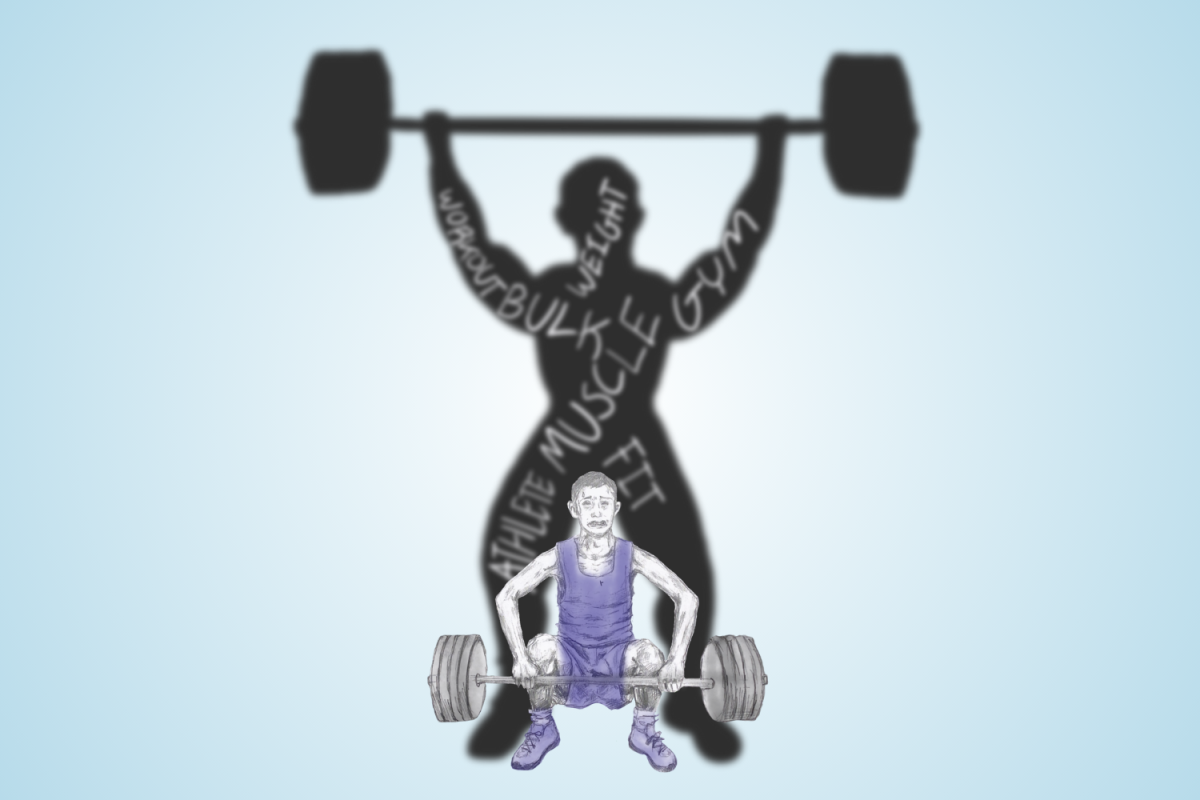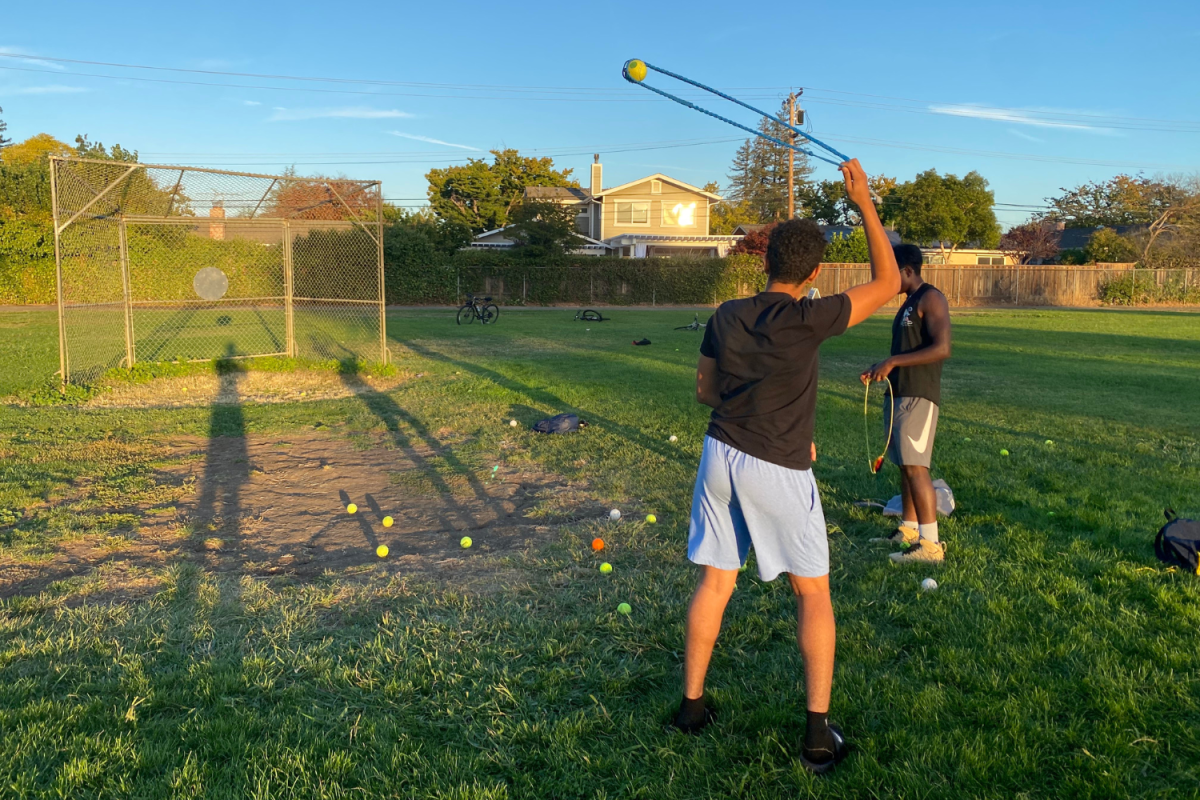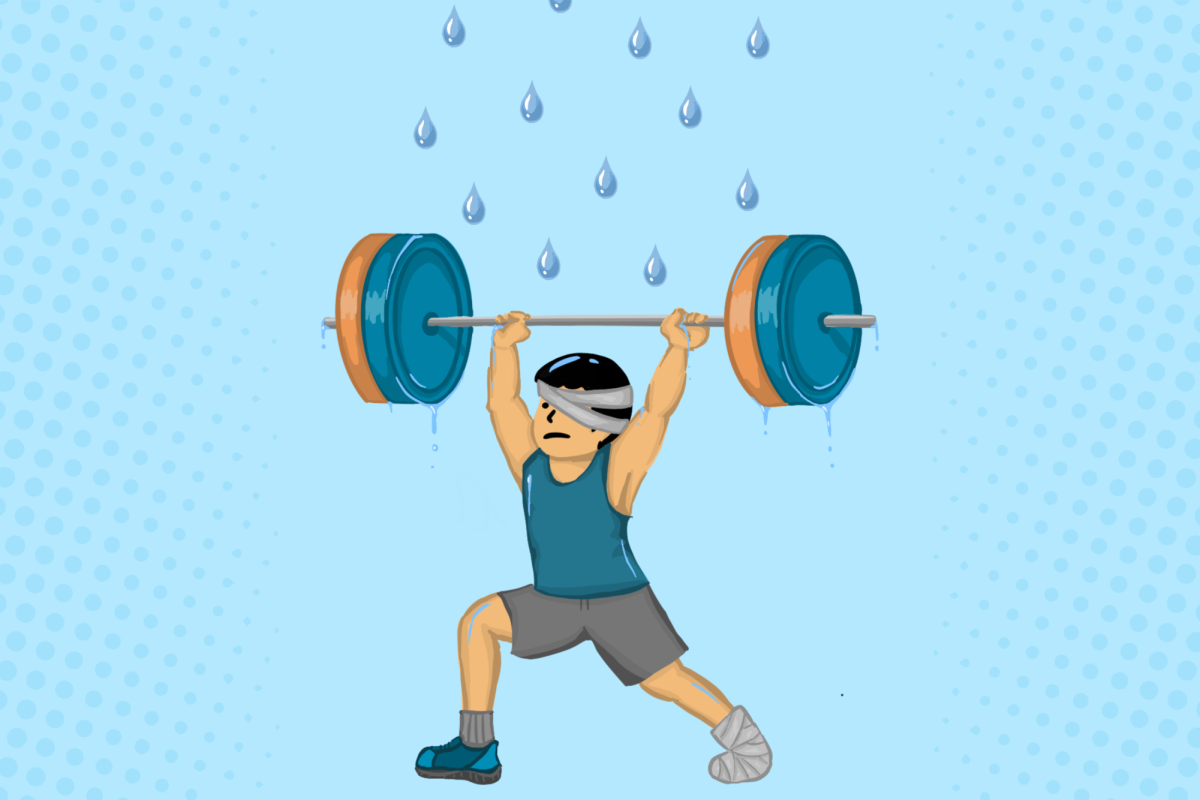This story contains references to content that may be difficult for those who have experienced body dysmorphia or are sensitive to topics concerning body image or eating disorders.
In the dim lights of the locker room, an athlete stands in front of the mirror. The other teammates have already left the room, but this athlete remains, nervous over the coming game. Criticizing themselves over their body, they worry that they’ll perform poorly in the game and let down the whole team. In anticipation of the game, they decided to refrain from eating for most of the day, yet their body remains the same — a far cry from the idealized body they had envisioned for themselves. Before they leave, taking one last look at the mirror, they bow their heads in shame, deciding to fast the next day as well.
Each sport has its own standards for the ideal physique, whether it be powerful legs, sculpted arms or long limbs. This pursuit of the perfect physique often begins with a comparison between aspiring athletes and those who they believe symbolize their ideal body. The sports world is one with expectations and stereotypes, where many believe that appearance promotes performance.
Every sport has different criteria for what constitutes the ideal body image — each shaped by the unique demands of the particular sport. For example, swimmers seek advantages with streamlined bodies, strong shoulders and long, powerful arms. Basketball players, much like swimmers, tend to be athletes with long, toned legs and arms, with more emphasis on height.
Favoring specific body types over others stems from both performance and aesthetics. Particular muscle structures often represent the ideal training outcome; thus, many athletes with that muscle build tend to perform well. However, sometimes an ideal athlete’s body is also shaped by the audience’s and judge’s preferences, having almost nothing to do with ability at all. For instance, having long legs, a long neck and a small head is often a common standard for a ballet dancer’s body, taken to fit the “ballet aesthetic.”
“There’s always the risk that somebody could have a flawed vision of what they think their body type is or should be for their sport,” Foothill College Head Athletic Trainer Warren Voyce said.
Beauty standards are not a new trend among sports, evident from Victorian-era sports corsets to modern diet culture and tips for staying fit. Quickly absorbed by the goal of a “better body,” people who are exposed to modern diet culture may excessively change their habits to pursue their idea of a perfect figure.
Junior Rhea Lalwani is captain of the cheerleading team, where she is a base. In cheerleading, members are divided into two groups: the fliers and the bases. Fliers tend to be shorter and leaner — usually the ones being lifted —, while bases are taller and more muscular — the ones doing the lifting. As a result, not all cheerleaders who wish to become a flier are able to. Yet the two parts, both fliers and bases, work towards the team in equal ways.
“It’s not just about a person’s body,” Lalwani said. “It’s about what will benefit the team the most. People usually take it like: ‘because I’m built this way I can’t do it,’ but that’s not the case.”
However, the constant pursuit by athletes to achieve the ideal body image may lead to more challenges than advantages. When it comes to “bulking” in the context of sports and fitness, individuals aim to build muscle mass and overall body size, increasing body fat — attributes that are beneficial in some sports. Unfortunately, excessive and forced bulking, when done incorrectly in the constant pursuit of a specific body image, may lead to consequences such as excessive fat gain, joint stress, digestive discomfort and cardiovascular health risks. On the other hand, some athletes who seek to appear slimmer and decrease bulky muscle through unhealthy means, such as starving oneself, may experience nutritional deficiencies, which may result in nausea and fainting. This may lead to eating disorders and detrimental mental health, including anorexia nervosa and body dysmorphia.
“As athletic trainers, we’re very cognizant of identifying and intervening athletes who might be putting themselves in danger,” Voyce said.
In controlled amounts, body and diet standards serve as a guideline for athletes to properly train and understand how to improve. Certain training techniques, developed by professionals through years of trial and error, have proven to be most effective toward helping athletes improve within their sports.
“Education is a big thing,” Voyce said. “There are appropriate techniques for gaining or losing weight, and appropriate fueling methods to help support an athlete’s strength that athletes should be educated about. Athletes should also be taught to be able to identify when they might be into unhealthy eating patterns.”
Aside from detrimental eating habits, many athletes who push their bodies to their limits in order to achieve the ideal body image are susceptible to overexercising or overtraining. This behavior involves pushing the body beyond its natural limits, often without adequate rest or recovery.
“A lot of the time, athletes are very pressured to fit the mold, because a lot of people aren’t naturally born with this physique,” ballerina and freshman Valerie Sokolenko said. “They are pressured to do whatever it takes to take on this mold, but it’s not really good for your mental health. Sometimes they take on these special diets, they eat differently, or they overtrain.”
With the exponential growth of social media platforms like Instagram and TikTok, athletes and athletic influencers have taken the spotlight, showcasing their own bodies. What an athlete eats in a day, the amount of hours a football player spends in the gym and weight-trainer mirror selfies of well-built muscles have become evermore popular among the sports and everyday community. Combined with already-prevalent insecurities over the average body, these “super” bodies only serve to intensify competition and comparison between athletes both within and beyond their communities, which may inadvertently contribute to feelings of body dissatisfaction and insecurity.
“Young athletes don’t realize that they may not have the access to nutrition programs, strengthening conditioning programs or other programs, and may not have the hormonal profiles yet to be able to achieve certain body images portrayed on the internet,” Voyce said.
Prioritizing technical skills instead of an ideal physique can lead to improvement in an athlete’s performance, boosting confidence and bettering the environment in which the athletes train. Rather than focusing on how their body looks, athletes can instead focus on training to become better technically, focusing on the positive and not the negative. Learning to be comfortable in their own body requires communication and encouragement, both from themselves and others.
Freshman Tyler Nagareda has been playing basketball and volleyball since third grade and fourth grade, respectively, and is planning to try out for both the basketball and volleyball teams. In these two sports, athletes hone their strength and capability to jump and pass balls. Taller bodies are often preferred, stemming from the need for successful rebounds in basketball, and an easier time playing front row in volleyball, as well as the ability to run faster. When he was younger, he struggled with a negative mindset around his weight, as well as bullying because of it.
“Body standards can hurt somebody’s confidence, and when somebody’s confidence is bad they usually play a lot worse,” Nagareda said.
After he persisted in his training with encouragement from his family, he was able to improve his skill through practice.
“They encouraged me, helped me, kept me playing and not giving up on it,” Nagareda said. “I feel a lot less excluded and picked on.”
Figures of authority, coaches and instructors can also play a large role in improving athletes’ confidence in themselves and their bodies. Coaches and instructors have the power over the amount of emphasis they put on an athlete to prioritize results and body image over psychological needs and actual skill. Healthy methods of coaching combine patience, freedom and collaboration between the coach and athlete. Coaches also serve as a source of support and encouragement for athletes who may be struggling with body insecurities.
“I want to be there for my athletes and be an open source for them, so that if something does come up, they tell us about it, because then we can get them the help that they need,” Voyce said.











































































